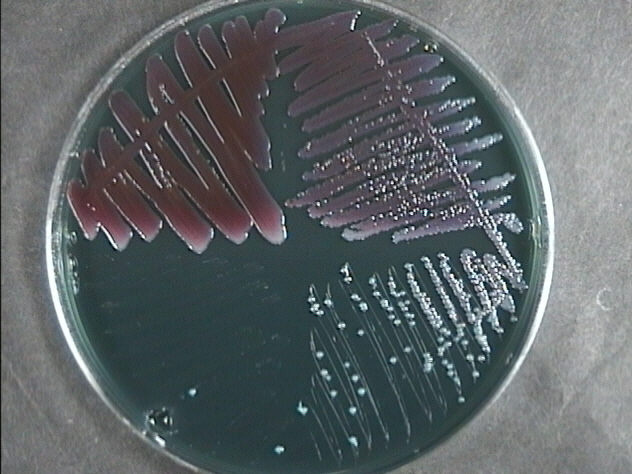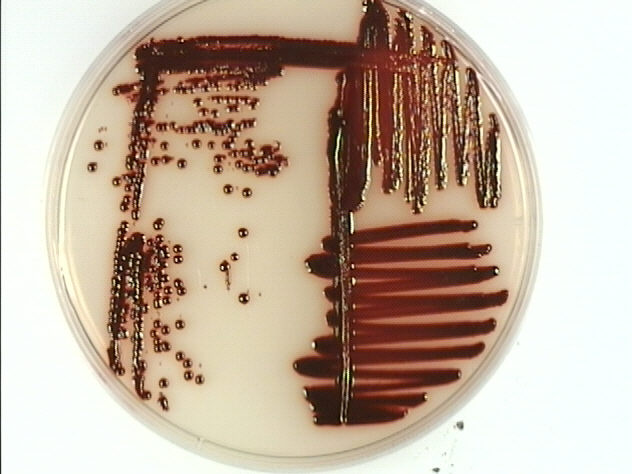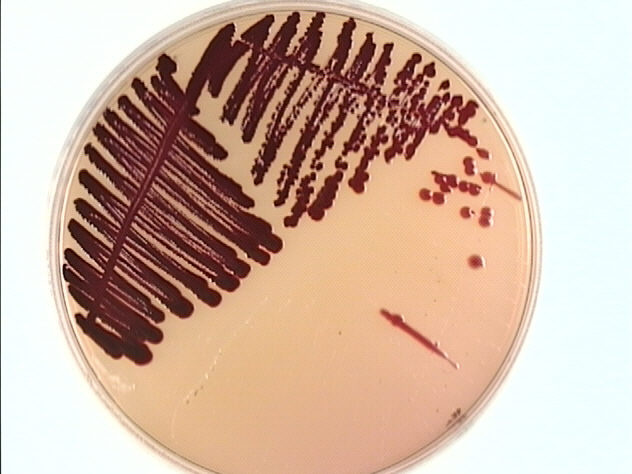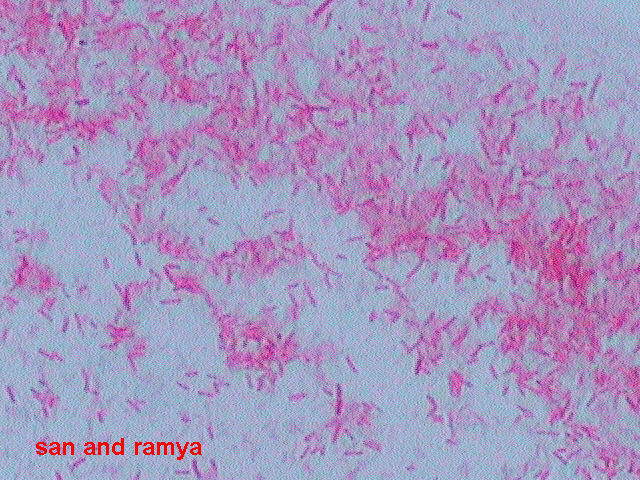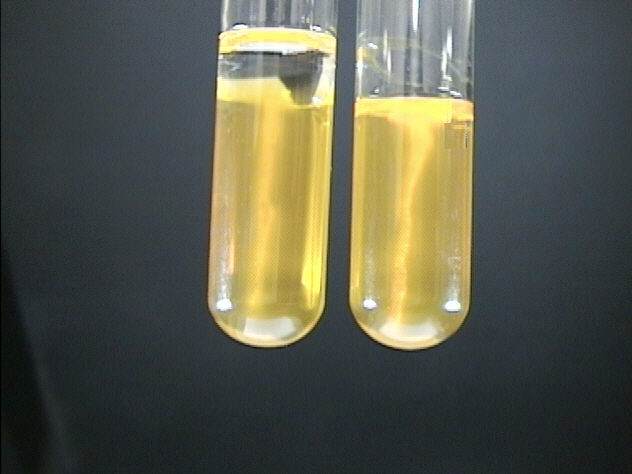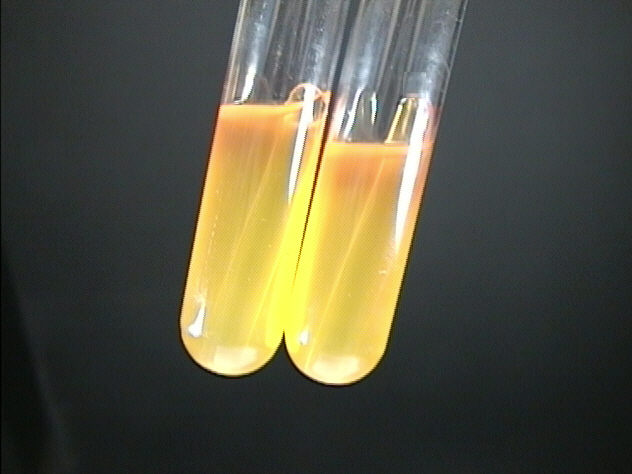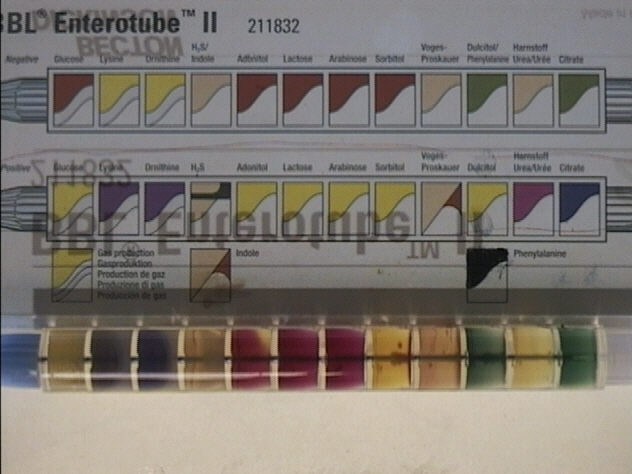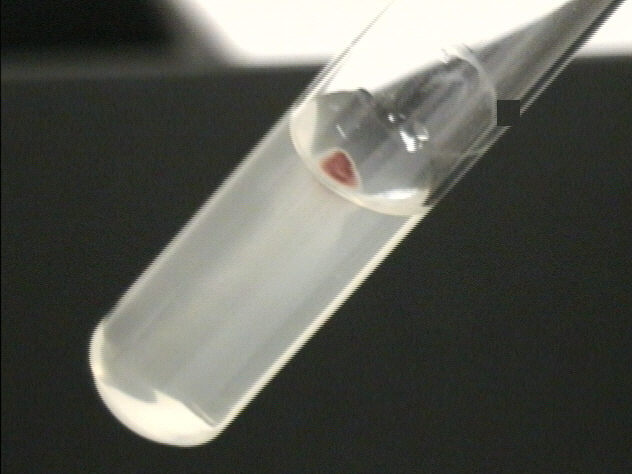Results
|
TEST |
RESULTS |
|
Growth On DTC agar. DTC agar was the enrichment media we chose to grow Serratia marcescens. The usually red colonies had a bluish tinge when seen against the background of the blue DTC agar. The colonies were pigmented only at room temperature or about 25 degrees Celsius. |
|
|
Growth On T- Soy agar. At room temperature, Serratia marcescens grew as bright, glossy red colonies on the TSA plate. The agar was a general enrichment agar and was not specific for the growth of Serratia marcescens. |
|
|
Growth on Macconkey's agar. Since the gram stain of Serratia marcescens revealed that the organism was a gram negative bacteria, MacConkey's agar served as a selective media. The organism grew as dark red colonies against the light pink background of the media. |
|
|
Gram stain of Serratia marcescens. Gram staining a sample of the organism from a pure culture revealed that it was a gram negative rod. |
|
|
Oxidation Fermentation tests. The organism was able to grow in both aerobic and anaerobic tubes. Acid was produced causing a change in the color of the pH indicator to yellow, but no gas was produced. |
|
|
Mannitol Tubes. Serratia marcescens was able to metabolize mannitol to produce acid, but gas was not produced. |
|
|
Enterotube – The tests and their results are as follows: - Glucose –
Positive for the fermentation of glucose to produce acid, but negative for
the production of gas. Lysine –
Positive. The change in the color of the indicator from pale yellow to purple
shows a change in the pH from acidic to alkaline conditions. The test shows
the bacterial decarboxylation of lysine which
results in the formation of alkaline end products. Ornithine – Positive. The test shows the bacterial decarboxylation of ornithine, which results in the formation of an alkaline end product. The pH indicator therefore undergoes a color change from pale yellow to purple. H2S production – Negative. This indicates that the organism is not capable to reducing sulfur containing products. Indol formation – Negative. This indicates that the organism does not have the enzyme tryptophanase to metabolize tryptophan. Adonitol – Negative. The organism does not ferment adonitol which results in the formation of acidic end products. Lactose – Negative. The organism is not capable of fermenting lactose. Arabinose – Negative. The organism is not capable of fermenting arabinose which results in the formation of acidic end products. Sorbitol – Positive. The organism is capable of fermenting sorbitol which results in the formation of acidic end products. Voges- Proskauer – Positive. The test detects the presence of aceylmethylcarbinol, an intermediate in the production of butyl glycerol in the fermentation of glucose. The presence was indicated by the development of a red color several minutes after the test was conducted. Dulcitol – Negative. The organism is not capable of fermenting dulcitol which results in the formation of acidic end products. Phenylalanine deaminase – Negative. The organism is not capable of producing pyruvic acid from the deamination of phenylalnine. Urea – Negative. The organism does not have the enzyme urease that is capable of hydrolyzing urea to ammonia. Citrate –
Negative. The organism is not capable of utilizing citrate in the form of its
sodium salt as the sole source of carbon. |
|
|
Motility stab. The motility stab showed that the organism was motile since it moved upward to the surface of the tube. |
|
|
Oxidase test |
Negative. The sample on the cotton swab did not undergo a change in color several minutes after the reagent had been added. |
|
Catalase test |
Positive. Immediately after the hydrogen peroxide solution had been added to a sample of the organism, it produced effervescence. |
|
Lactose test |
Negative. The lactose tubes that were originally red due to the presence of the pH indicator did not undergo a change in color and there was no gas production. This indicted that the organism did not utilize lactose. |
